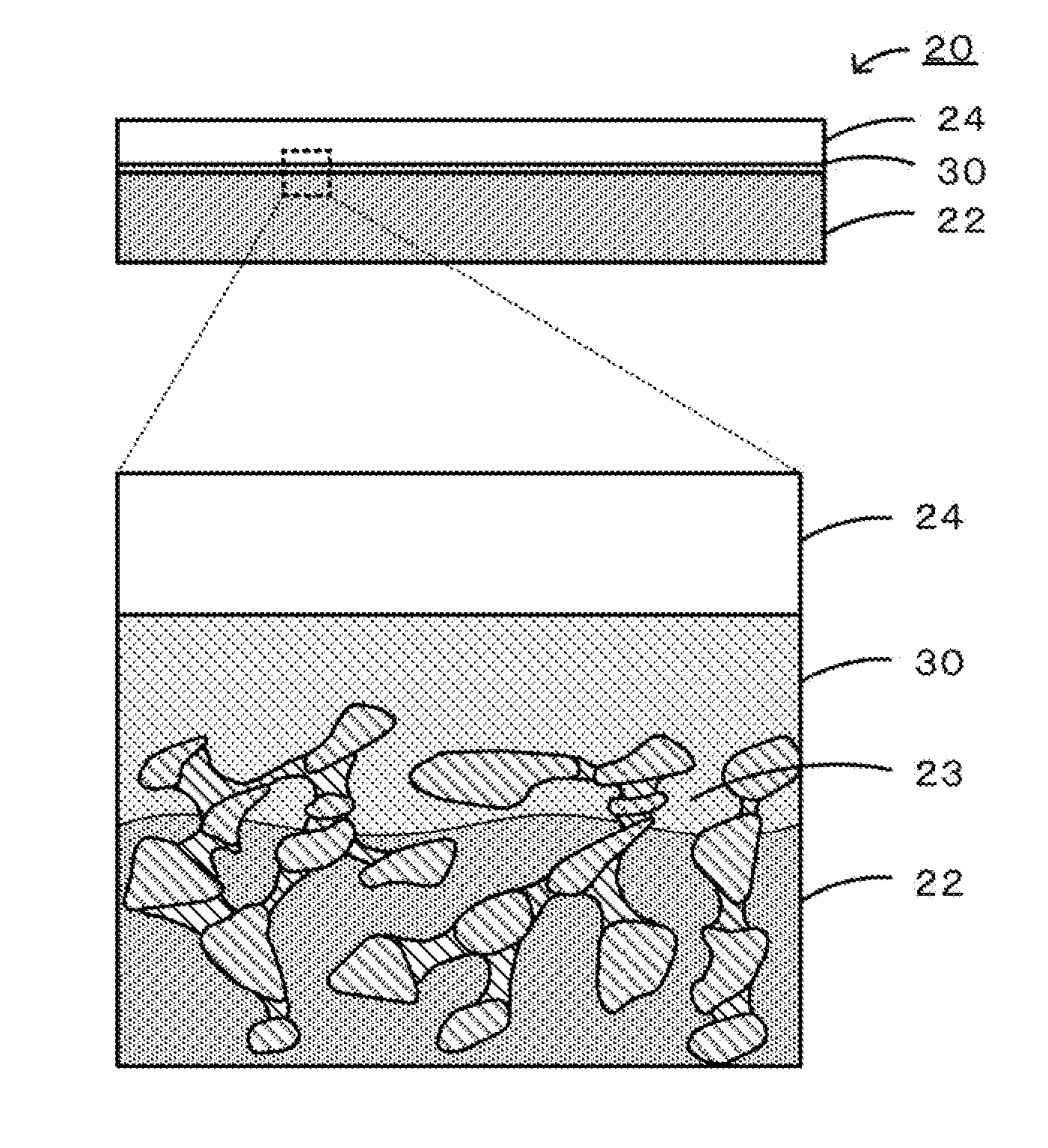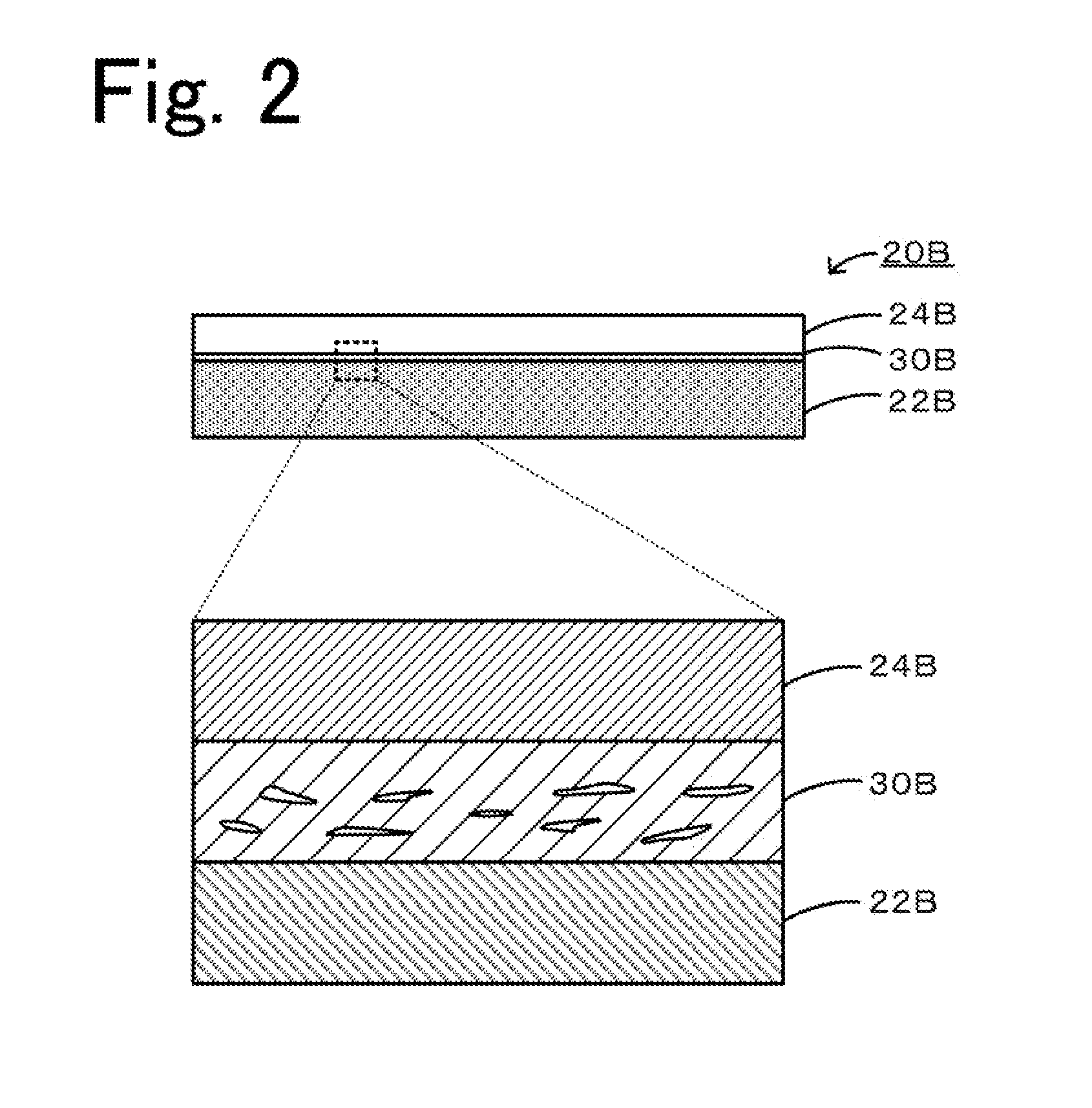Joined body and method for producing the same
a joint body and body technology, applied in the field of joint bodies, can solve the problems of low heat resistance, low oxidation resistance, low joint body strength, etc., and achieve the effect of easy reaction with a member
- Summary
- Abstract
- Description
- Claims
- Application Information
AI Technical Summary
Benefits of technology
Problems solved by technology
Method used
Image
Examples
experimental example 1
[0069]In Experimental Example 1, the first member and the second member were the Si-bonded SiC sintered bodies, and the metal raw material of the main oxide of the joint was an Fe powder. The raw materials of the joint were a first raw material powder (Fe powder) having an average particle size of 3 μm, which was smaller than the average pore size (10 μm) of the substrate, and a second raw material powder (Fe powder) having an average particle size of 35 μm, which was greater than the average pore size (10 μm) of the substrate. The first raw material powder and the second raw material powder were mixed at a volume ratio of 40:60. In Experimental Example 1, the joining condition was 750° C. for 1 hour in the air. Table 1 summarizes the members, the type of joint raw material, the blend ratio of metal raw materials, and the joining conditions for each sample of Experimental Examples 1 to 20.
experimental examples 2 to 7
[0070]In Experimental Examples 2 to 7, the addition of a second compound (conductive aid) containing a second component to the joint was examined. The second component was Ti, Sn, or Nb. In Experimental Examples 2 to 4, the metal raw material of the joint was the Fe powder, to which 1.0 mol %, 3.0 mol %, and 5.0 mol % TiO2 were added as the second compounds, respectively. Each of these additive amounts is the number of moles of the second compound based on the total number of moles with respect to the joint. In Experimental Examples 5 and 6, the metal raw material of the main component of the joint was the Fe powder, to which 1.0 mol % and 10 mol % SnO2 were added as the second compounds, respectively. In Experimental Example 7, the metal raw material of the main component of the joint was the Fe powder, to which 10 mol % Nb2O5 was added as the second compound.
experimental examples 8 to 11
[0071]Experimental Example 8 was produced in the same manner as Experimental Example 1 except that a raw material powder (Cu powder) having an average particle size of 3 μm was used alone. Experimental Example 9 was produced in the same manner as Experimental Example 8, except that the second component was Li, and 1 mol % Li2CO3 was added as the second compound. Experimental Example 10 was produced in the same manner as Experimental Example 1 except that a raw material powder (Ni powder) having an average particle size of 35 μm was used alone. Experimental Example 11 was produced in the same manner as Experimental Example 10 except that 1 mol % Li2CO3 was added as the second compound.
PUM
| Property | Measurement | Unit |
|---|---|---|
| Temperature | aaaaa | aaaaa |
| Temperature | aaaaa | aaaaa |
| Thickness | aaaaa | aaaaa |
Abstract
Description
Claims
Application Information
 Login to View More
Login to View More - R&D
- Intellectual Property
- Life Sciences
- Materials
- Tech Scout
- Unparalleled Data Quality
- Higher Quality Content
- 60% Fewer Hallucinations
Browse by: Latest US Patents, China's latest patents, Technical Efficacy Thesaurus, Application Domain, Technology Topic, Popular Technical Reports.
© 2025 PatSnap. All rights reserved.Legal|Privacy policy|Modern Slavery Act Transparency Statement|Sitemap|About US| Contact US: help@patsnap.com



